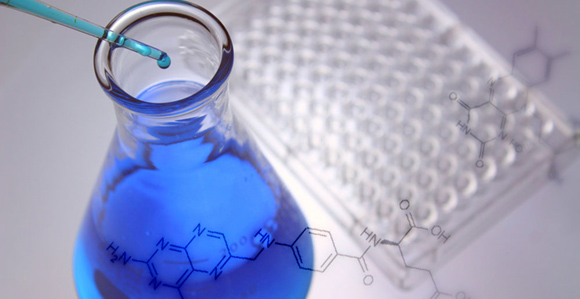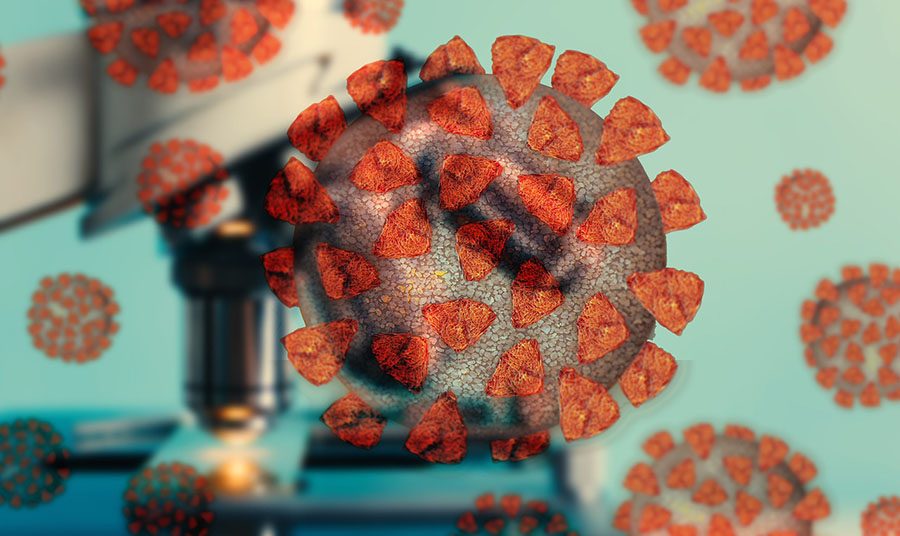The Life Sciences Report: Soligenix Inc. (SNGX:OTCQB) has a broad technology base covering inflammation, oncology and biodefense. From a development perspective, how do you prioritize these target areas?
Christopher Schaber: We structure our pipeline to individual development teams, so that all programs are priorities. However, as you would imagine, the development phase and timing to critical data play an important role in program prioritization.
We have two U.S. Food and Drug Administration (FDA) fast-tracked, Phase 3, pivotal trials that are set to begin in 2015, one in pediatric Crohn's disease and the other in cutaneous T-cell lymphoma (CTCL), both orphan indications. In addition, we have a Phase 2 fast-tracked trial in oral mucositis in head-and-neck cancer. We expect data from this trial in mid-2015. Due to their development status, these inflammation and oncology programs are high priorities for 2015.
TLSR: What are the targeted patient populations for your priorities in oncology, inflammation and biodefense?
CS: Pediatric Crohn's disease affects approximately 160,000 (160K) patients worldwide annually. About 40K CTCL patients are diagnosed worldwide annually. Oral mucositis in head-and-neck cancer affects approximately 180K patients worldwide annually. The biodefense patient population is more difficult to estimate, because this population would be the result of a catastrophic event. In events such as these, the targeted population has the potential to be far-reaching.
TLSR: For pediatric Crohn's disease, can you tell me about SGX203?
CS: SGX203 is a proprietary oral formulation of beclomethasone dipropionate (BDP), a steroid that acts topically along the gastrointestinal (GI) tract. Because it acts topically, inflammation from the esophagus to the colon is reduced with minimal systemic exposure. You get the anti-inflammatory effects of the steroid without the potential for detrimental side effects—growth impairment, bone demineralization—associated with systemic steroids.
"Pediatric Crohn's disease is an orphan indication, tailor-made for a small company to commercialize on its own."
Furthermore, SGX203 is a two-tablet formulation, comprising an immediate-release BDP component for the esophagus and stomach and a delayed-release BDP component for the small and large intestines. The entire GI tract is treated, regardless of where the inflammation is located.
TLSR: What is the clinical development status of SGX203?
CS: We're entering into a pivotal Phase 3 clinical trial, and are finalizing the protocol with the FDA. We expect to initiate this study in H2/15, with completion targeted for H1/17.
TLSR: Will Soligenix advance SGX203 to market, or will the compound be partnered for commercial development?
CS: As you would imagine, Phase 3 clinical programs typically receive business partnership interest; however, we've always been prepared to advance this program independently because pediatric Crohn's disease is an orphan indication, tailor-made for a small company to commercialize on its own. With SGX203 for pediatric Crohn's disease representing a market opportunity of approximately $200 million ($200M) worldwide, this is a great product for a small company like Soligenix. We continue to evaluate the value proposition for our shareholders. Though we are prepared to advance SGX203 ourselves, we are open to a partnership in the future.
TLSR: Pediatric Crohn's disease is an inflammatory disease, and inflammation is also a complication associated with various cancer therapies. Can you tell me about oral mucositis and SGX942?
CS: Oral mucositis causes ulceration of the mouth, tongue, soft palate and oropharynx, and is an extremely debilitating side effect of cancer radiotherapy and/or chemotherapy. It's extremely painful, causing an inability to eat, reduced cancer treatment tolerance, and increases in patient cost of care.
What is also known about oral mucositis is that it is linked to a dysregulation of the innate immune system. That's an important element, because SGX942, a first-in-class, synthetic, 5-amino acid innate defense regulator, modulates the body's innate defense system to treat disease. We've generated a host of in vitro, in vivo and preclinical animal data showing a consistent mechanism of action and a consistent response in treatment of oral mucositis and infection. We have also demonstrated the safety of SGX942 in a Phase 1 safety study in 84 healthy volunteers. SGX942 is being evaluated in a Phase 2 dose-ranging study that is currently enrolling.
"The biodefense business unit is fully funded by the government. This allows us to build a robust pipeline with government support."
We recently announced positive news regarding the trial, in which the data review committee for the study recommended we narrow that trial down to a single, blinded, SGX942 and placebo study, and enroll 20 more subjects. The fact that our review committee recommended this small study increase gives us a level of cautious optimism that we're going to potentially see something important when the data is available in H2/15.
TLSR: You're also developing SGX201 for radiation enteritis. Can you tell me about that program?
CS: SGX201 is a delayed-release, oral BDP formulation. We're developing this formulation for treatment of lower GI inflammation caused by radiotherapy. Target patients may be cervical cancer or colon cancer patients receiving lower pelvic radiotherapy. These patients, when receiving radiation, develop symptoms similar to ulcerative colitis. By targeting inflammation, we can deliver a necessary therapy with an improved safety profile compared to systemically absorbed therapeutic agents.
The current Phase 2a study in SGX201 will not advance until additional government funding is available. The Phase 1/2 clinical trial was funded through a Small Business Innovation Research grant from the National Cancer Institute (NCI).
TLSR: Let's transition from inflammation to cancer. Please describe SGX301 for CTCL.
CS: CTCL is a rare class of non-Hodgkin's lymphoma in which malignant T cells migrate to the skin surface, causing development of red lesions or patches. SGX301 is synthetic hypericin, an extremely potent photosensitizer. It is applied topically to CTCL lesions and is activated by safe, visible, fluorescent light. Because there is no cure for CTCL, therapies focus on management of the recurrent lesions of patients living with the disease. Currently, off-label use of the psoriasis drug PUVA (psoralen with ultraviolet-A [UV-A] light) is the most common treatment for early stage CTCL. Unfortunately, the drug psoralen is mutagenic, and UV-A light is carcinogenic (sunlight). SGX301 avoids treating cancer with cancer-causing agents, making it a potential first-line therapy with a significantly improved safety profile compared to PUVA. Given the $250M worldwide market potential for SGX301 in this orphan disease, this is a nice addition to the Soligenix portfolio.
TLSR: Biodefense seems to be the outlier in your target indications. Are there any pathologies or biological mechanisms that tie your biodefense programs to the cancer and inflammation programs?
CS: The active ingredient for SGX203 and SGX201 is BDP. This is also the active ingredient in our OrbeShield™ program, treating GI acute radiation syndrome. In addition, the synthetic 5-amino acid peptide contained in SGX942 is also the active ingredient in our melioidosis program. Melioidosis is a life-threatening infectious disease caused by gram-negative bacteria found in soil and water. This is an orphan disease primarily found in Thailand and northern Australia. When untreated, the mortality rate is approximately 90%. So there is synergy across the biotherapeutic and biodefense business units.
"You cannot rule out a business partnership in either biotherapeutics or biodefense."
It's important to note, however, that the biodefense business unit is fully funded by the government. This allows us to build a robust pipeline with government support, with the added ability to offset some our overall burn, providing more effective cash management. For example, we recently received up to $32M in government contracts from the Biomedical Advanced Research and Development Authority (BARDA) and the National Institute of Allergy and Infectious Diseases (NIAID) for development of OrbeShield™.
TLSR: I know you have other programs in biodefense business unit. What are the highlights?
CS: In addition to OrbeShield™, we also have a heat-stable ricin toxin vaccine known as RiVax™, for which we recently were awarded contract of up to $24.7M from NIAID. Between OrbeShield™ and RiVax™, we have up to $57M in government contract funding.
The vaccine heat stabilization technology used for RiVax™ is called ThermoVax™. This proprietary technology is also used with our anthrax vaccine, VeloThrax™. As you would imagine, the ThermoVax™ platform has multiple potential applications in both biodefense and infectious disease vaccines. We are having a number of discussions around ThermoVax™, with the potential for partnerships in emerging infectious disease.
TLSR: Does Soligenix have any active partnerships?
CS: We are currently working with Intrexon Corp. (XON:NYSE) to develop a novel passive immunotherapy for melioidosis. This program is early, but is a very important proprietary program. While we haven't publicly defined our strategy, we are working along the lines of proteomics to dissect and understand this disease.
TLSR: Soligenix saw a stock increase at the beginning of March. Was the stock increase due to the SGX942 data, or were other factors involved?
CS: I think SGX942 was part of it, as was the positive data we're rolling out of our biodefense business unit. Specifically, we announced important data demonstrating that RiVax™ protects 100% of treated animals compared to all placebo animals dying. These results were released around the same time as our oral mucositis Phase 2 data review committee release. The combination of these events most likely triggered the stock uptick.
TLSR: Which of your programs is expected to be the primary revenue driver in the near term?
CS: In the near term, we're generating revenues with our government contracts. However, we expect SGX301 in CTCL to potentially be the first product to market, with potential FDA approval as early as 2017 and marketing in 2017/18.
TLSR: What should investors look for from Soligenix over the next two years?
CS: Within our pipeline, we have a great deal of good science and development taking place. I think investors will see a lot of preclinical and clinical trial activity, which will include, in 2015, clinical data from our Phase 2 oral mucositis study, as well as potential initiation and completion of Phase 3 pivotal studies in CTCL and pediatric Crohn's disease, both starting in 2015. You'll also continue to see preclinical and clinical data coming from our biodefense business unit, with continued government funding for these programs. Finally, you cannot rule out a business partnership in either biotherapeutics or biodefense.
TLSR: Thanks so much for your time.
Christopher J. Schaber, PhD, has more than 25 years of experience in the pharmaceutical and biotechnology industry. Dr. Schaber has been the Soligenix president, chief executive officer and a director since August 2006. He was appointed chairman of the board in 2009. He also serves on the boards of directors of the Biotechnology Council of New Jersey and the Alliance for Biosecurity, and has been a member of the corporate councils of both the National Organization for Rare Diseases and the American Society for Blood and Marrow Transplantation. Prior to joining Soligenix, Dr. Schaber served from 1998 to 2006 as executive vice president and COO of Discovery Laboratories Inc., where he was responsible for overall pipeline development and key areas of commercial operations, including regulatory affairs, quality control and assurance, manufacturing and distribution, preclinical and clinical research, and medical affairs, as well as coordination of commercial launch preparation activities. From 1996 to 1998, Dr. Schaber was a co-founder of Acute Therapeutics Inc., and served as its vice president of regulatory compliance and drug development. From 1994 to 1996, Dr. Schaber was employed by Ohmeda PPD Inc. as worldwide director of regulatory affairs and operations. From 1989 to 1994, Dr. Schaber held a variety of regulatory, development and operations positions with The Liposome Company Inc., and Elkins-Sinn Inc., a division of Wyeth-Ayerst Laboratories. Dr. Schaber received his bachelor's degree from Western Maryland College, his master's degree in pharmaceutics from Temple University School of Pharmacy and his PhD in pharmaceutical sciences from the Union Graduate School.
Read what other experts are saying about:
Want to read more Life Sciences Report interviews like this? Sign up for our free e-newsletter, and you'll learn when new articles have been published. To see a list of recent interviews with industry analysts and commentators, visit our Interviews page.
DISCLOSURE:
1) Daniel E. Levy conducted this interview for Streetwise Reports LLC, publisher of The Gold Report, The Energy Report, The Life Sciences Report and The Mining Report, and provides services to Streetwise Reports as an independent contractor. He or his family owns shares of the company mentioned in this interview: None.
2) Soligenix Inc. paid Streetwise Reports to conduct, produce and distribute the interview.
3) Christopher J. Schaber had final approval of the content and is wholly responsible for the validity of the statements. Opinions expressed are the opinions of Christopher J. Schaber and not of Streetwise Reports or its officers.
4) The interview does not constitute investment advice. Each reader is encouraged to consult with his or her individual financial professional and any action a reader takes as a result of information presented here is his or her own responsibility. By opening this page, each reader accepts and agrees to Streetwise Reports' terms of use and full legal disclaimer.
5) From time to time, Streetwise Reports LLC and its directors, officers, employees or members of their families, as well as persons interviewed for articles and interviews on the site, may have a long or short position in securities mentioned. Directors, officers, employees or members of their families are prohibited from making purchases and/or sales of those securities in the open market or otherwise during the up-to-four-week interval from the time of the interview until after it publishes.




























































